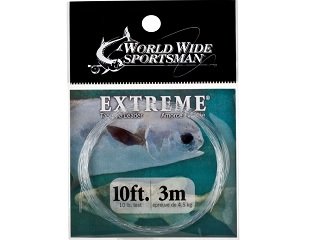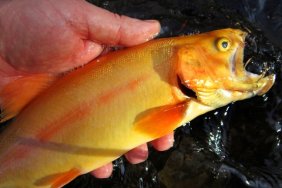 It’s time once again to explore a few of the fishing-specific terms that are tossed around on the water or in tackle shops, in an effort to help those not in the know become a little more knowledgeable. Today we’ll look at some common fly fishing terms: leaders and tippets.
It’s time once again to explore a few of the fishing-specific terms that are tossed around on the water or in tackle shops, in an effort to help those not in the know become a little more knowledgeable. Today we’ll look at some common fly fishing terms: leaders and tippets.
Leaders
Despite the beliefs of many, fish are actually quite intelligent and perceptive. Hence, if they can see your fly line, they can see that your fly isn’t natural. This is where leaders come into play. These nearly invisible lengths of fluorocarbon or monofilament line serve as connections between your fly line and your fly, and are designed to trick fish into thinking your feathered fly is a real prey item. The leader attaches to your fly line at the butt end, and then tapers down to where your fly is attached, which allows your fly to maintain a very natural presentation and your colored line to stay out of sight.
When you’re deciding on a length for your leader, it’s smart to go with a leader that’s about the length of your rod. The longer the leader is, the less likely a fish will notice your line. However, longer leaders are harder to cast and manage, which is why shorter leaders are better for when it’s windy, when you’re in a narrow stream, or when you’re casting shorter distances.
Tippets
While leaders are more widely applicable in the fishing world, tippets are a little more uncommon for the everyday fisherman. A part of the leader, the tippet is formed as the leader tapers down and is actually the most delicate part of the leader. It’s also the portion that attaches to the fly. Some leaders are pre-tapered and come in only one section, while others use two or more sections, knotted together, to narrow down to the tippet. Tippets come in many sizes and lengths to match fishing conditions, flies, and your tackle itself.
Leaders and tippets are common terms associated with fly fishing, and those looking to get into the sport or just carry on a conversation with others who fly fish will do well to become familiar with the terms.








